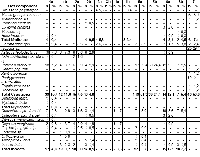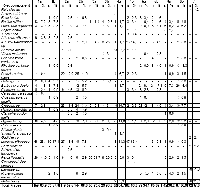|
 IUCN/SCC Otter Specialist Group Bulletin IUCN/SCC Otter Specialist Group Bulletin
©IUCN/SCC Otter Specialist Group
Volume 23 Issue 1 Pages 1 - 48 (April 2006)
Citation: Georgiev, D.G. (2006) Diet of the Otter Lutra lutra in Different Habitats of South-Eastern Bulgaria IUCN Otter Spec. Group Bull. 23 (1): 5 - 11
Previous | Contents | Next
Diet of the Otter Lutra lutra in Different Habitats of South-Eastern Bulgaria
Dilian G. Georgiev
Departament of Ecology and Environmental conservation, University of Plovdiv, Tzar Assen Str. 24, BG-4000 Plovdiv, Bulgaria
e-mail: diliangeorgiev@abv.bg, dgeorgiev@greenbalkans.org
(received 12th April 2006, accepted 14th June 2004)
Abstract: The study was carried out in three geographic regions of south-eastern Bulgaria with similar conditions: Upper Thracian Valley, Kazanlashka Valley, Surnena Sredna Gora Mountain and Black Sea Coast. The material was collected between 29.02.2005 – 21.03.2006 from various habitats. A total of 78 species were registered in the otter diet, and 65 of them were new records for Bulgaria. Following this study, a total of 101 different species of prey are known in this country. The main food source of the otter was found to be fish (Carassius auratus gibelio, C. carassius, Perca fluviatilis, Lepomis gibbosus, Barbus cyclolepis), but in rivers marsh frogs (Rana ridibunda) and freshwater crabs (Potamon ibericum) were also dominant prey. The main food source species and the trophic niche breadth of the otter in the region studied varied through the seasons and according to different habitats. |
| Keywords: otter, Lutra lutra, diet, habitats, Bulgaria. |
INTRODUCTION
The diet of the otter in Bulgaria was poorly known. Until now (GEORGIEV, 2004) 36 food components were reported: 2 species of molluscs (Mollusca: Bivalvia), 5 species of crustaceans (Crustacea), 4 species of insects (Insecta), 9 fish species (Pisces), 2 amphibian species (Amphibia: Anura), 3 species of reptiles (Reptilia: Serpentes, Chelonia), 4 bird species (Aves), 2 species of mammals, one of them eaten as a carcass (Mammalia), fruits from 4 plant species and garbage. Information of the seasonal variation of the diet in one urbanized habitat was also obtained, calculated as a relative percentage of frequency. Before this study, there were only 36 species of prey known in this country, but after this study, the number has increased to 101.
Our study was aimed on the otters’ diet when using different habitat types in south-eastern Bulgaria, and focused on the following tasks: 1. to provide more precise data on the species spectrum of the diet; 2. to determine the main food sources; 3. to gather some information on the seasonal variation in the food and the trophic niche breadth.
STUDY AREA, MATERIAL AND METHODS
The study was carried out in three geographic regions of south-eastern Bulgaria with similar conditions: Upper Thracian Valley, Kazanlashka Valley, Surnena Sredna Gora Mountain and Black Sea Coast. Most of the main otter habitats up to 500 meters a. s. l. were investigated. The mean annual temperatures in the region are 9-12˚ C with strong to moderate Mediterranean climate influence. The average annual rainfall is 550 mm (GRUEV and KUZMANOV, 1999).
Habitat types were considered according to the classification of GEORGIEV (2005). Different habitat sub-categories were also divided on the basis of the presence or lack of fish growing human activities:
- Medium sized reservoirs combined with streams, floods, medium sized rivers and irrigation canals, not used for fish farming. Upper Thracian Valley – artificial lake in a city park (Stara Zagora Town, UTM: LG89); Surnena Sredna Gora Mountain - artificial lake in a park, (Starozagorski Bani Resort, UTM: LH70), 2 microdams north of Starosel village (UTM KH91) and Matenica village (LH90). Total spraints collected 256 (173 – spring-summer period, 83 – autumn-winter period), and also food remains from feeding sites were gathered.
- Medium sized reservoirs and fishponds combined with streams, floods, various sized rivers and irrigation canals, used for fish farming. Upper Thracian Valley – microdams near the villages of Trankovo (UTM: MG08), Podslon (UTM: MH00), Aprilovo (UTM: MG07), Konush (UTM: LG35), fish farms near Plovdiv Town (UTM: LG17); Kazanlashka Valley – microdam near Sheinovo village (UTM: LH62), fish farms near Nikolaevo Town (UTM: MH01). Total spraints collected 322 (130 – spring-summer period, 192 – autumn-winter period), and food remains gathered.
- Large reservoirs in hilly areas, without any combinations with other habitats, not used for fish farming. Upper Thracian Valley – Trakiec Dam (UTM: LG63) and Kazanlashka Valley – Jrebchevo Dam (UTM: MH02). Total spraints collected 78 (45 – spring-summer period, 33 – autumn-winter period).
- Large reservoirs in plain areas, combined with medium sized rivers and floods, used for fish farming. Upper Thracian Valley – Ovcharica Dam (UTM: MG27, MG37). Total spraints collected 108 (48 – spring-summer period, 60 – autumn-winter period), and food remains gathered.
- Medium sized rivers and similar sized soil bank canals with relatively constant water levels combined with small canals and floods. Upper Thracian Valley – rivers Blatnica (UTM: MH10), Oriahovica (UTM: MH00), and Sazliika (UTM: LG98), canals near Plovdiv (UTM: LG16) and Stara Zagora Towns (UTM: LG99). Total spraints collected 200 (84 – spring-summer period, 116 – autumn-winter period), and food remains gathered.
- Large rivers combined with canals, microdams, and rice fields. Upper Thracian Valley – Marica River (UTM: MG13, MG14, LG06, LG16). Total spraints collected 170 (85 – spring-summer period, 85 – autumn-winter period), and abundant food remains gathered.
- Black Sea coast rocky areas combined with a small freshwater river north of Carevo town (UTM: NG67), spring-summer period only, total 21 spraints and abundant food remains collected.
The material (spraints and food remains collected between 29.02.2005 – 21.03.2006) was air-dried at room temperature, labeled and stored in plastic bags. It was studied under binocular microscope and dissected in 70 % alcohol. The food components were determined using keys mainly by DAY (1966), MARZ and BANZ (1987), KARAPETKOVA and JIVKOV (1995), POPOV and SEDEFCHEV (2003). A reference collection of fish bones and scales made especially for this study and the whole animal collections of the Faculty of Biology of Plovdiv University were also used. In addition, the fish (MIHAILOVA, 1965, 1970; KARAPETKOVA and JIVKOV, 1995; JIKOV and DOBREV, 2001) and mammal (POPOV and SEDEFCHEV, 2003) species’ distribution was considered.
For the quantification study the minimal number of individuals was accepted and measurements were taken using a caliper.
The inquiry method was only used for the identification of Acipenseridae species (farmed in Ovcharica Dam) in the otters’ diet and this prey was not included in the statistics.
The trophic niche breadth was derived from the LEVIN`s index (FEINSINGER et al., 1981):
B = 1/RΣpi2
where R is the number of food categories available (here R = 11: Mollusca, Crustacea, Myriapoda, Insecta, Pisces, Anura, Reptilia, Aves, Mammalia, fruits and unidentified) and pi is the proportion of each food categories.
RESULTS AND DISCUSSION
A total of 78 species were identified in the otter diet: 7 Mollusca, 9 Crustacea, 2 Myriapoda, 7 Insecta, 31 fish, 5 frogs, 5 reptiles, 4 birds, 6 mammals, and fruits from 2 plant species (Table 1, 2, 3).
| Table 1. Invertebrates in the diet of the otter (Lutra lutra) from different habitats in south-eastern Bulgaria.
The habitat numbers correspond to those mentioned in the text, n-minimal number of individuals, %-percent of occurrence, a-spring-summer, b-autumn-winter. Click on image to see full version. |
 |
| Table 2. Fish in the diet of the otter (Lutra lutra) from different habitats in south-eastern Bulgaria.
The habitat numbers correspond to those mentioned in the text, n-minimal number of individuals, %-percent of occurrence, p-presence but not included in the statistics, a-spring-summer, b-autumn-winter |
 |
| Table 3.Various food components in the otter’s diet (except Invertebrates and Fish) from different habitats in south-eastern Bulgaria. The habitat numbers correspond to those mentioned in the text, n-minimal number of individuals, %-percent of occurrence, a-spring-summer, b-autumn-winter. Total number of individuals/objects for a given habitat registered and the whole food niche breadth calculated is represented. |
 |
We consider that some of the invertebrates were not eaten directly but were taken in the stomach content of other prey (for example mussels, small gastropods, insects and isopods), and some (for example Dreissena polymorpha) were present only occasionally in the spraint, as shell or chitin remains. Larger invertebrates, we consider were taken by the otter (Helix lucorum, Gryllotalpa gryllotalpa, Ditiscus marginalis and others). The species Scardinius erythrophtalmus, Emys orbicularis and carcass of a domestic dog and garbage remains reported for the same region by GEORGIEV (2004) were not found during this study, and we consider they are occasional and rare components in the otters’ food here. The first species is relatively rare in the ichthyofauna of the area investigated (KARAPETKOVA and JIVKOV, 1995).
In most of the habitats studied the main food source was fish and the following species seemed to be the most important prey in the region - Carassius auratus gibelio and C. carassius (medium sized and large reservoirs used for fish farming, large rivers), Lepomis gibbosus (the two sub-categories of medium sized reservoirs and large dams used for fish farming), Perca fluviatilis (large and medium sized reservoirs not used for fish farming), Barbus cyclolepis (rivers and irrigation canals, especially during the autumn-winter period). From the marine environment fish from the families Labridae and Gobiidae were most abundant in the diet. Only in the region of the large Marica River was the main prey throughout all seasons the freshwater crab (Potamon ibericum), and the frog Rana ridibunda was very common during spring–summer period in the region of medium sized rivers and the soil bank canals.
Two of the dominant species in the otter’s food, Potamon ibericum and Barbus cyclolepis, occur in Europe mostly in the Balkans and no reference papers for their preying on these species were found. The marsh frog (Rana ridibunda) has a southern distribution and is not a typical prey species for most of the regions of northern countries (TUMANOV and SMELOV, 1980; MCFADDEN and FAIRLEY, 1984; WEBER, 1990; OTTINO and GILLER, 2004; BRZEZINSKI et al., 1993; TAASTROM and JACOBSEN, 1999; SIDOROVICH, 1995; SIDOROVICH et al., 1998). The marsh frog was reported from neighboring countries like Albania (PRIGIONI et al., 1986) and Hungary (LANSZKI et al., 2001) as one of the otter’s main prey.
The food niche breadth calculated was rising from 0,10 to 0,24. It had highest levels in the medium sized reservoirs and fishponds during the autumn-winter period and in large rivers during spring and summer. The narrowest trophic niche was estimated for all of the types and seasons in the large dams.
CONCLUSIONS
A total of 78 species were registered in the otter diet, and 65 of them were new records for Bulgaria. Until now 101 different species of prey were known for this country. The main food source of the otter in the lowland and hilly areas of south-eastern Bulgaria was fish, but in rivers frogs and freshwater crabs were also dominant prey. The main food source species and the trophic niche breadth of the otter in the region studied varied throughout the seasons and with different habitats.
ACKNOWLEDGMENTS - I wish to thank Nikolai Arabadjiev (NGO “Green Balkans”) for collecting the material from Ovcharica Dam during the autumn–winter period, Nedko Nedialkov (NGO “BSBP”) and Prof. Dimitar Bechev (Plovdiv University) for giving me some of the literature and Slaveia Stoicheva (NGO “Green Balkans”) for the kind co-operation during the whole study.
REFERENCES
Brzezinski, M., Jedrzejewski, W. & Jedrzejewska, B. (1993). Diet of otters (Lutra lutra) inhabiting small rivers in the Bialowieza National Park, eastern Poland. J. Zool., 230: 495-501.
Day, M. (1966). Identification of feather and hair remains in the gut and faeces of stoats and weasels. J. Zool. 148: 201-217.
Georgiev, D. (2004). Materials on the diet of the otter (Lutra lutra L., 1758) from Bulgaria. Trav. Sci. Univ. Plovdiv, Animalia, 40 (6): 165-172. [in Bulgarian].
Georgiev, D. (2005). Habitats of the Otter (Lutra lutra L.) in some regions of Southern Bulgaria. IUCN OSG Spec. Bull. 22: 8-16.
Gruev, B. & Kuzmanov, B. (1999). General Biogeography. Univ. of Plovdiv Publ., 344 pp. [in Bulgarian].
Jivkov, M. & Dobrev, D. (2001). The fish, amphibians and reptiles of the Rhodopes Moutain. Sofia, Bulg. Soc. for Protection of the Rhodopes, 128 pp. (in Bulgarian).
Karapetkova M. & Jivkov, M. (1995). The Fish of Bulgaria. Geya Libris Publ., 246 pp. [in Bulgarian].
Lanszki J., Kormendi, S. Hancz, C. & Martin, T. (2001). Examination of some factors affecting selection of fish prey by otters (Lutra lutra) living by eutrophic fish ponds. J. Zool., 255: 97-103.
Marz R. & Banz, K. (1987). Gewöll- und Rupfungskunde. Acad. Verlag Berlin, 396 pp.
McFadden Y. & Fairley, J. (1984). Food of otters Lutra lutra in an Irish limestone river system with special reference to the crayfish Austropotamobiuspallipes. Journal of Life Sciences Royal Dublin Society, 5: 65-76.
Mihailova L. (1965). On the Ichthyofauna of the Thracian Valley. Fauna of Thracia: II. BAS, 265-288. [in Bulgarian].
Mihailova L. (1970). Ichthyofauna of the rivers from the Aegean Sea catchment. Sofia, Nature, 4: 62-65. [in Bulgarian].
Ottino P. & Giller, P. (2004). Distribution, density, diet and habitat use of the otter in relation to land use in the Araglin valley, Southern Ireland. Biology and Environment: Proceedings of the Royal Irish Academy, 104b (1): 1–17.
Popov V. & Sedefchev, A. (2003). The Mammals of Bulgaria. Sofia, Vitosha Publ., 291 pp. (in Bulgarian).
Prigioni C., Bogliani, G. & Barbieri, F. (1986). The otter Lutra lutra in Albania. Biol. Cons., 36: 375-384.
Sidorovich V. (1995). Minks, otter, weasel and other Mustelids. Minsk, Uradzaj, 191 pp. [in Russian].
Sidorovich V., Kruuk, H. Macdonald, D. & Maran, T. (1998). Diets of semi-aquatic carnivores in northern Belarus, with implications for population changes. Altitude and European Otter ecology, Cambridge Univ. Press, 177-189.
Taastrom H.-M. & Jacobsen, L. (1999). The diet of otters (Lutra lutra L.) in Danish freshwater habitats: comparisons of prey fish populations. J. Zool., 248: 1-13.
Tumanov I. & Smelov, V. (1980). Food relations between mustelids in North-Western RSFSR. Zool. J., LIX, 10: 1536-1543. [in Russian].
Weber J. (1990). Seasonal exploitation of amphibians by otters Lutra lutra in northeast Scotland UK. J. Zool., London, 220: 641-652.
Previous | Contents | Next
|




